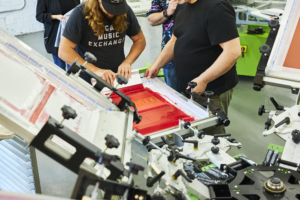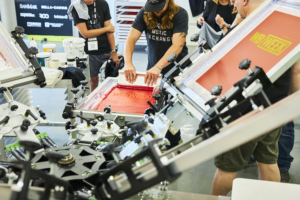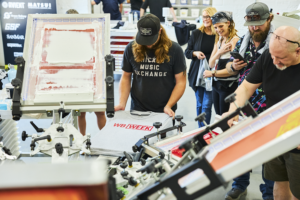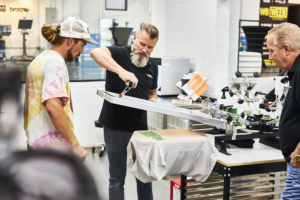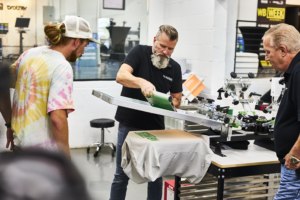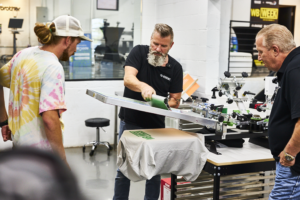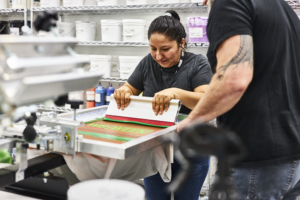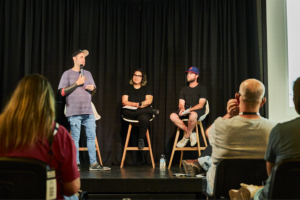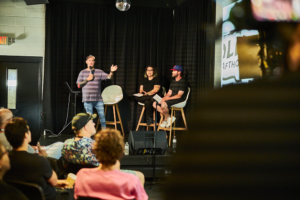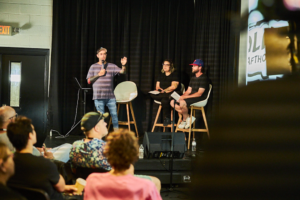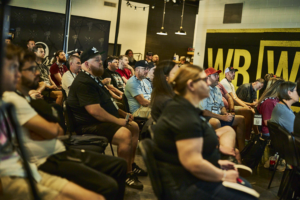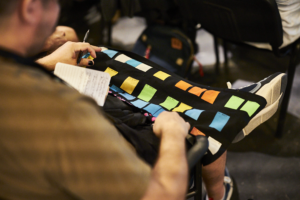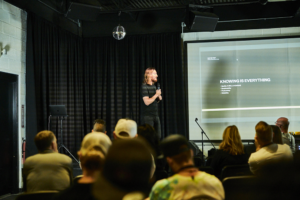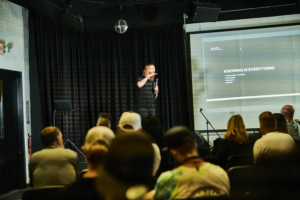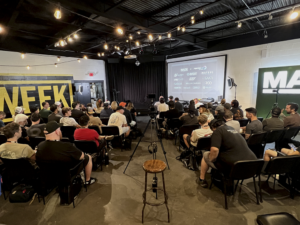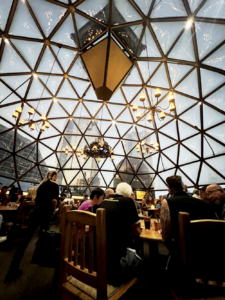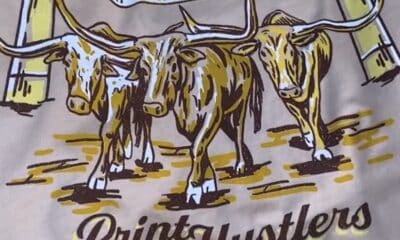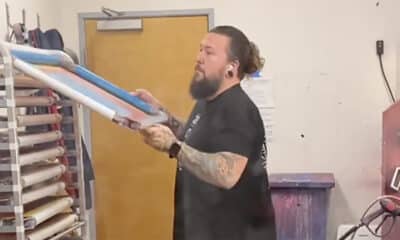FOR THE THIRD YEAR, apparel decorators, industry experts, and suppliers met in Fort Worth, Texas, July 19-22 at MADE Laboratory for WB/WEEK, a hands-on learning experience for novice and experienced printers. “This was the first WB/WEEK where we got a really great audience of people who are here for more than just an industry event, they really learn about water-based ink,” said Brett Bowden, Co-Founder of MADE Laboratory.
Attendees of WB/BASIC – Intro to Water-Base Workshop received live training and learned how to select the proper garment for a soft hand, the differences between low, medium, and high solid acrylics, best practices for reclaiming screens, and more.
The two-day WB/CAMP – Advanced Water-Base Workshop dove into the technical, practical, and business aspects of water-based printing. Attendees received interactive training from Night Owls and Forward Printing staff and gained expert knowledge from Avient Inks, Matsui Color, Green Galaxy, and SAATI Group. Classes included advance screen making, simulated process discharge, hi-res full color halftone printing with HSA ink, and more.
Attendee Takeaways
“In all my years as a printer, I’ve mastered plastisol, but I was scared to death of water-based. I still have a lot to learn, but I will do water-based printing,” said John Price, owner of Stampede Screen Graphics. Price will be the only shop in his area offering this, which he said will give him an advantage to his current and potential clients.
Carson Hopfe of TNT Shirts in Houston learned the importance of screen care and pre- and post- production processes. “If I’m being honest, I was not the most educated about screens, so learning a lot of the terminology and the importance of all the steps that go into getting a screen ready for production will go a long way,” he said. “I also was not aware about HSA and LSA inks. I’ve had trouble printing HSA inks in the past and it makes a lot of sense now. I can now reflect and picture what I could have done differently. I think every screen printer should take the class.”
Watch Briah Gober, head printer at Burlaep in Chattanooga, Tennessee; Tim Cantu, production manager at Night Owls in Houston, Texas; Kristyn Leary, owner operator at Origin Apparel in Steamboat, Colorado; and Zach Achorn CEO at SelfMade Designs in Quincy, Massachusetts, share their takeaways from WB/WEEK.
Top Tips
- Discharge inks work best on 100 percent-cotton fabrics, but that doesn’t mean you can’t get great results on some blends. It depends on many factors, within the manufacturing process.
- Make sure you cure your shirts completely. Over-curing will not affect the print.
- Low Solid Acrylics (LSA) is a great place to start; High Solid Acrylics (HSA) are the hardest because they dry the quickest.
- What you and your clients want is a soft hand, so select a garment that’s compatible with the water-based ink you want to use. Light, soft fabric will help with LSA and discharge water-based ink.
- One of the best ways to achieve consistency in the screen department is through an automatic coater. Consistency is the most important thing in pre-press.
- Use a Magic Eraser prior to degreasing in screen reclaim to eliminate hazing/ghosting.
- With water-based ink, you’re looking for glossy sheen to the ink in the screen. When you start losing the gloss, it means your ink is dehydrating.
- Generally, the best time to print water-based is in the morning, due to higher humidity and lower temperatures.
- You should not use hard water to hydrate/clean your screens on press; distilled or filtered water is recommended.
Top Quotes
- “Learning how T-shirts are made will make you a better printer.” — Brett Bowden, MADE Laboratory
- “Color is an opinion. We all see color differently.” — Jesse Martinez, Matsui. [Tell that to your customer the next time they complain about Pantone matching!]
- The future is screen AND digital.” — Bobby Panico, Green Galaxy
- “Your level of quality should never change. Don’t let an employee wanting to leave at 3 p.m. on a Friday affect a job.” — Jeffrey Paul, Youngone, LTD.
- “People don’t want to work? No, they don’t want to work at your sh**y print shop for $12 an hour.” — Eric Solomon, Night Owls
- “You’re only as good as your screen room.” — Carson Hopfe – TNT Shirts
Advertisement
Best Practices in Water Base
The team at Night Owls (Eric and Val Solomon, Danny Gruninger, and Tim Cantu) not only led hands-on printing classes during WB/CAMP, but also shared Pantone matching tips, how to choose the right ink for your print project, and the importance of educating your clients during their session “Best Practices in Water Base.” Night Owls, based in Houston, has specialized in water-based printing since attending a water-based workshop in 2018.
Communicating with your customers is key. You need to educate them on why certain applications won’t work, while also meeting their expectations. “It’s your job to be the expert,” said Eric Solomon, co-owner of Night Owls. “Nine times out of 10 they don’t give a f*** about the process, but they’re going to be able to tell the difference in the touch and quality.”
When making the initial transition from plastisol to water-base, your artwork is going to look different. Begin by running tests like serif and sans serif text, tonal ramp, and more.
Factors for Choosing the Right Ink:
- Who is your customer?
- What do they want?
- What garment are you printing on?
- What color(s) are you printing?
- How complicated is the art?
- How long is the run?
Advertisement
“You can learn the practices, but by coming to these events, you learn so many small tips you would never know,” said Kevin Corcoran, Founder of Forward Printing. But it’s not enough to just attend a workshop. You need to take what you learned and put it into practice at your shop. “You have to go home and put in the work yourself,” said Danny Gruninger, senior print engineer at Night Owls.
The next coming event produced by MADE Laboratory, Print Hustlers, will take place November 4-6, 2023, in Newport Beach, California. Stay tuned for more information.
PHOTO GALLERY (17 IMAGES)
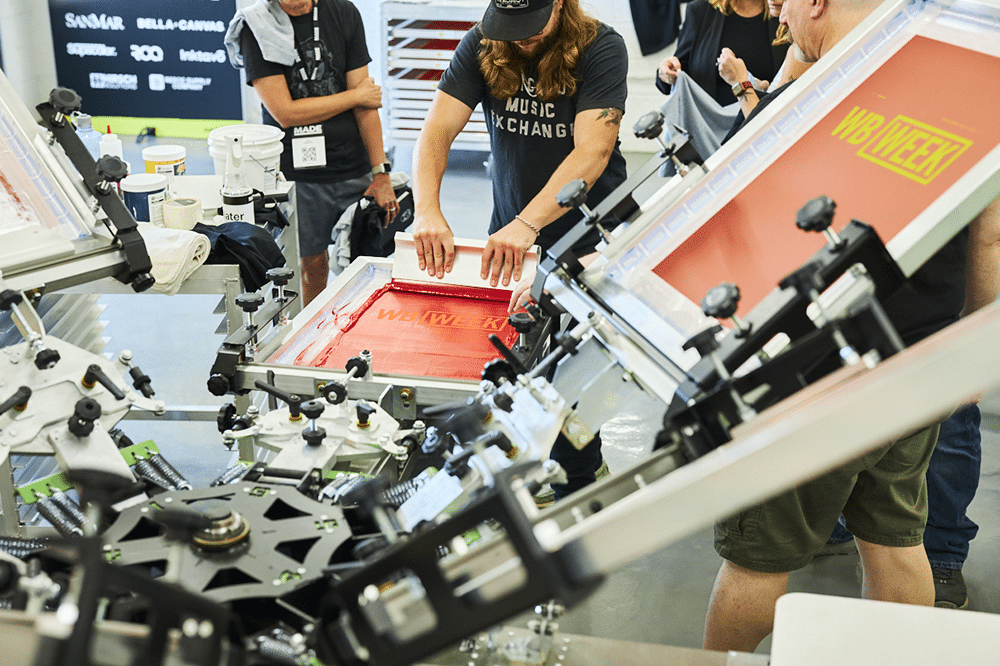

 Case Studies2 months ago
Case Studies2 months ago
 Art, Ad, or Alchemy2 months ago
Art, Ad, or Alchemy2 months ago
 Andy MacDougall2 months ago
Andy MacDougall2 months ago
 Columns4 weeks ago
Columns4 weeks ago
 Editor's Note3 weeks ago
Editor's Note3 weeks ago
 Marshall Atkinson3 weeks ago
Marshall Atkinson3 weeks ago
 Thomas Trimingham2 months ago
Thomas Trimingham2 months ago
 Case Studies4 weeks ago
Case Studies4 weeks ago
